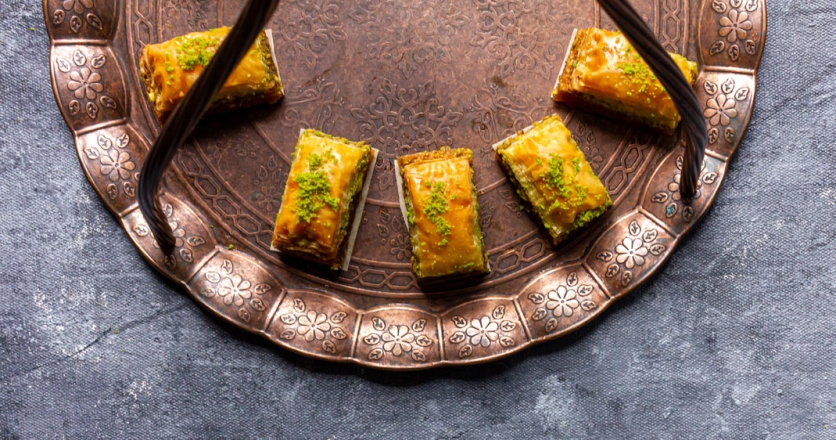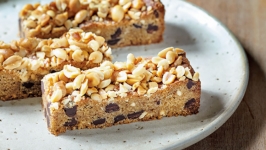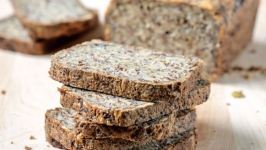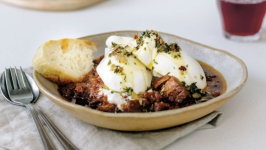First Bites - September 2022 - World of Pastry
A Portuguese favourite
When Stephanie Benskin meets a customer at a farmers’ market, they often start the conversation with “When I was in Lisbon.” That’s because she’s selling what is arguably Portugal’s most famous and beloved pastry — pastel de nata. “I trigger those memories for people,” Benskin says. It’s something that she grew up eating and making with what she calls other “Portuguese home comforts.”
These Portuguese custard tarts are characterized by a creamy custard centre and a puff-pastry crust, which Benskin describes as “crispy, flaky, buttery, savoury.”
“Every one is made by hand and baked in a very hot oven,” says Benskin, who recommends they be eaten warm with a sprinkle of cinnamon and icing sugar. She even brings her air fryer to the market so she can warm them up for customers.
In early 2020, Benskin spent time perfecting her pasteis de nata at a bakery in Lisbon and when she returned to Vancouver, her husband encouraged her to share this family favourite with others. She now operates out of the Coho Commissary and sells at local markets while also accepting orders from her Facebook and Instagram pages. Starting in October, you can find Casa de Nata at Riley Park and Hastings Markets. Benskin is grateful for all the support at the markets thus far and looks forward to expanding her offering with savoury items in the future.
Casa de Nata
@casadenata_
Find it: Riley Park and Hastings Farmers’ Markets and online
Turkish treats
“You can not make so ething delicious with only one (delicious) ingredient. Every ingredient has to be up to par,” says Hakki Çakal, the owner of The Golden Horn Turkish Bakery & Café. He explains that is not just the high- quality nuts, such as pistachios and walnuts that make his Turkish baklava taste so good, but also the light and flaky Yufka pastry his team makes in house. He’s quick to point out that he drizzles the thin layers with sugar syrup, “not honey.”
The Golden Horn offers various flavours of baklava including hazelnut, pistachio, walnut and almond and coconut. You’ll also find other forms of baklava such as Midye, a mussel- shaped type, which is among his most popular items, and Kadaif, which is made with what Çakal calls “strings of dough.” These are made by drizzling liquid batter on a very hot surface and scooping up the resulting crispy filaments.
Çakal operates The Golden Horn’s two locations with his wife and two sons. His daughter and son-in law also pitch in. Çakal chats to his customers, many who are clearly regulars, and offers helpful explanations of the products to those who are new.
In each type of business, customers teach you,” says Çakal, adding that at that moment in time, customers were saying, “I want my lunch.” To this end, he is offering savoury items such as Borek, which is made with the same Yufka pastry and filled with chicken, beef and currants, lentils, or spinach and feta. Guvech, roasted vegetables that can be topped with meat or cheese, is another option. Just make sure you save room for the baklava.
The Golden Horn Turkish Bakery
thegoldenhorn.ca | 604.566.0931 | @tghbakery
Find it: 2857 Cambie St. and 40-1055 Canada Place, Vancouver
Jewel-toned mooncakes
Butter-Mere Pâtisserie, led by pastry chef Jamie Tung, is known for its stunningly decorated cakes for birthdays, weddings and other celebrations such as the 100 days celebration many Asian families mark in the lives of their babies. Its menu of cakes includes diverse ingredients including passionfruit, mango and Vietnamese coffee. The company, which now has a staff of six and operates out of Torafuku restaurant’s kitchen space, also offers customized designs.
The Mid-Autumn Moon festival, which this year falls on September 10, marks the first full moon after the autumnal equinox, and Tung explains it is a time for family reunions. Mooncakes are traditionally eaten during this time, often made with a pastry of flour and lard and filled with mung bean paste and an egg yolk. Tung calls Buttermere’s take “more modern.”
It is an unbaked preparation, referred to as “snowy skin” with a “mochi” texture that comes from glutinous rice. To achieve the many jewel tones, she uses purple yam, beetroot, pumpkin powder, matcha and even charcoal.
“When I started, I didn’t think of having my own business, or that I would work with so many different people and different projects,” Tung says. Tung made a point of enriching her pastry skills, honed at the Pacific Institute of Culinary Arts, once or twice a year by attending various masterclasses with pastry greats including Cédric Grolet, who is famous for his fruit- shaped pastries. She also gets inspiration from other art forms, often looking to painting and sculpture for inspiration. An SFU communications graduate, she admits she wasn’t always that interested in pastry. She did, however, have a hazy memory of a baking class she took as a child with her sister. “That memory kept coming back to me.”
Butter . Mere Pâtisserie
958 Main St., Vancouver | 778.956.7789
buttermere.ca | @butter.mere











